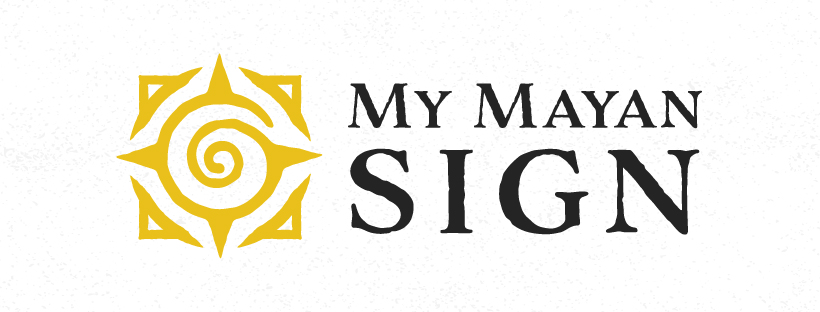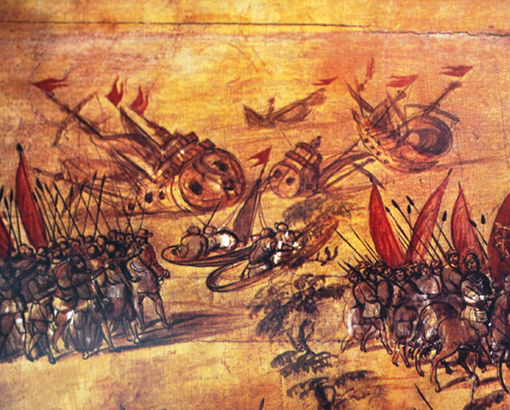Welcome to Part 2 of our thought-provoking series “Conquest of America” by contributing writer Michal Pawles.
Most of us have heard of the Spanish conquistadors conquering the Maya, Aztec and Inca Civilizations. We can get the impression that the conquest of America was immediate. Several dozen years after Europeans arrived in the new world. The three most powerful Civilizations, which were at a high level of cultural, social and economic development, were conquered by a group of Westerners. But was it really so?
This series of articles explores the Spanish conquest of America, presenting to readers the conquest from the perspective of Europeans and Native Americans, so as to show this period impartially.
If you’d like to start from the beginning, read Part 1 here.

The Paradox of The Knights of Saint James [Part 2]
Hollywood movies often show situations where a small squad of soldiers on a secret mission makes havoc behind the enemy lines. We can see it in films such as Tears of the Sun, Kelly’s Heroes, and Heartbreak Ridge.
The situation could be similar to the Spanish conquistadors who conquered the American continent with a small group of people.
However, there are differences between movie heroes and conquistadors. For example, most of the Spanish conquistadors weren’t soldiers. So how did they manage to conquer such powerful Aztec, Maya, and Inca civilizations?
The Romans subjugated so many provinces because they had a larger mass of people operating in known territories with the help of mercenary commanders and the army, without having to worry about livelihood.
‘’Meanwhile, our Spaniards… There were never more than two or three hundred of them, and often much less… And during the next expeditions no one paid them, no one forced them, but they set off on their own account and responsibility.’’
Francisco De Jerez (1534)
Iberian Commandos
Many people probably have the image of the Spaniards as a professional, well-trained, well-endowed group of soldiers that was capable of independently conquering “backward cultures”.
We can see it in the painting CORTÉS RECIBE EN VERACRUZ.
The Spanish word soldado means soldier. This word is not used by Cortes or Pedro Alvarado, in the account of the Franciscan Diego de Länder from the conquest of the Yucatan. The word soldado espanoles (Spanish soldiers) is used only once. In fact, in letters written by the Spanish conquistadors in 1520-1596, only one contains the word soldier.
At the time of the first conquests, the structures of the institutionalized army as we know it today did not exist yet. It only began to form much later.
These days, it is costly to send professional soldiers, equip them and pay for them. The same logistical challenge was in the sixteenth century. Spain, at that time, was still under the constant risk of war with the European and Arab powers (the Reconquista ended in 1492).
In the first period of the conquests and colonization of the new world by the colonial powers, the role of the monarchy was marginal. The king granted someone licenses to conquer some territory in return for future titles (viceroys, governors) and awards.
There were also companies formed by private investors to explore and search for gold, they were often formed by Spaniards born in colonies and veterans of other conquests, as well as indigenous peoples and slaves from Africa.
The search for gold and encomiendas was what attracted the Spaniards to the new world. Encomienda is the allocation of Native Americans’ place and output. The holder was called encomendero and had the right to impose tribute on goods and labor on certain communities.
Competitions Performed by the Conquistadors of Panama, Peru, and the New Kingdom of Granada (Colombia):
| Pana (1519-1522) | Peru (1532-1534) | Columbia (1536-1543 | |
| Aristocracy | 2 | 10 | |
| Merchants | 4 | ||
| Craftsman | 20 | 17 | 13 |
| Advisers, secretaries | 15 | 2 | 10 |
| Professionals | 4 | 6 | 12 |
| Clergy | 1 | ||
| Notaries | 2 | 4 | 9 |
| Rentiers | 2 | 2 | |
| Shipowners | 1 | 5 | |
| Officials | 1 | 7 | |
| Management positions | 31 | ||
| Horse-keepers | 44 | ||
| Slave owners | 2 | ||
| Middle-class competitions | 45 | 43 | 139 |
| Farmers | 16 | 1 | |
| Sailors | 10 | 2 | |
| Soldiers | 2 | 3 | |
| Artillerymen | 2 | ||
| Plebeian competitions | 28 | 4 | 4 |
| Summary | 74 | 47 | 153 |
City-States
The Aztec or Maya empires were not centralized states.
The structure of the Native American civilizations of North America was similar to Mediterranean civilizations such as Greece and Phoenician. These were the cities of the state.
The Aztec Empire was similar in nature to the Delian League. The city-state of Athens vassalized other Greek city-states or forced them to join the Athenian military and economic alliance. It was the same in pre-Columbian America. The cities of the state competed with other cities of the states.
Therefore, when the Spaniards arrived, many of the Aztec city-states saw opportunities to use the Spaniards for their own ambitions. Gomara claims that Cortes first came to Tenochtitlan with six thousand allies. According to Ross Hassig, 200,000 natives took part in the final assault on the Aztec capitals, which is rarely mentioned.
The conquistadors soon realized that the old Roman rule of Divide and Rule worked perfectly well in pre-Columbian times. The main allies were the Hujeotzing and the Tlaxcalteks.
In one Mayan report, in 1541, after a series of local skirmishes, the Spaniards entered an important city, Calkini, to receive a tribute. The local monarch, describing this ceremony, indicated that it was the Nahua Indians, called by the Mayans Culhuas, who came there first, and they were responsible for the tribute zebra for the Spanish (source: M. Restall, Maya Conquistador, 1998, pp. 86-103).
There was no sense of ethnic community between the Maya. The Indians of the Calkini region accompanied the Spaniards on their expeditions to the unconquered regions of the Yucatan. In the cities of Tekax and Oxkutzcab in May, groups of archers were stationed, called to take part in attacks on the still unconquered territories of the colonies.
Not Only White
Other helpers in the conquest of America were Africans who were brought in as slaves. They served the Spanish conquistadors, took part in battles, and if they managed to survive, they usually received a cent.
Valesquez, in a letter to the king in 1515, wrote about many black slaves who accompanied him in the conquest. Many Africans participated in the conquest of Peru. During the siege of Cuzco by Manco Inca in 1536, the forces sent from Hispaniola as military support for the besieged included 200 African combatants.
Diagrams of the life of exemplary Conquistadors:
| Name | Birthplace and status | The place of the conquistador’s activity | The reward for the fight |
| Juan Garrido | Africa, slave | Mexico, Zacatula, California | granting freedom, providing several positions |
| Sebastian Toral | Africa, slave | Jucatan | granting freedom, tax exemption |
| Juan Bardales | Africa, slave | Honduras, Panama | granting freedom, and a pension of 50 pesos |
| Antonio Perez | North Africa, freeman | Venezuela | position of a rider and promotion to the rank of captain |
| Juan Portugues | Africa or Portugal, | Venezuela | unknown |
| Pedro Fulupo | Africa, slave | Costarica | unknown |
| Juan Garcia | Spain, freeman | Peru | allocation of gold and silver from Cuzco and Cajamarca |
| Miguel Ruiz | Spain, freeman | Peru | allocation of gold and silver from Cuzco and Cajamarca |
The True Conquest
The true conquest of America is often overlooked in history books.
The process of destroying and enslaving New World civilization was the method used by all the powers of the world. Like the Romans, after defeating the Etruscans, destroyed their culture and wiped out history. The Aztecs used this method to build an empire.
”Tlacaelel, commander of the Aztec troops. After the victory in 1428, he was appointed Cihuacoatl (viceroy) and carried out a consistent reform of the entire society. He created a mystical vision of the Aztecs as a people chosen by the sun. He was the initiator of burning or condemning to oblivion of all previously written or remembered stories and the creation of the entire mythology from scratch.
Source: Wikipedia Mezoamerican Chronology
He also burned all the books of the conquered peoples with iron consistency and replaced them with the vision of reality promoted by the Aztecs. The conquered were allowed to maintain the traditional pantheon of local gods, but Huitzilopochtli and his mother Coatlicue, the goddess of the earth, had to be considered supreme ”.
The above text shows that the Aztecs pursued the same imperial policy as the Spaniards towards them. This method was common all over the world.
Therefore, we must remember the murders and crimes of the Spaniards and other European colonizers, and not forget about the wars and slaughter of the Mesoamerican civilization. Objectivism will help us understand the motivations and the end results of conquests.
I encourage you to read the next articles in this series. In the upcoming part three, we will consider the misunderstanding between the conquistadors and Native Americans.
What is your biggest takeaway from this article? I invite you to share them in the comments.
If you have specific questions on this topic, you are also welcome to email me.

Do you know your Mayan Sign? Get your free report.



